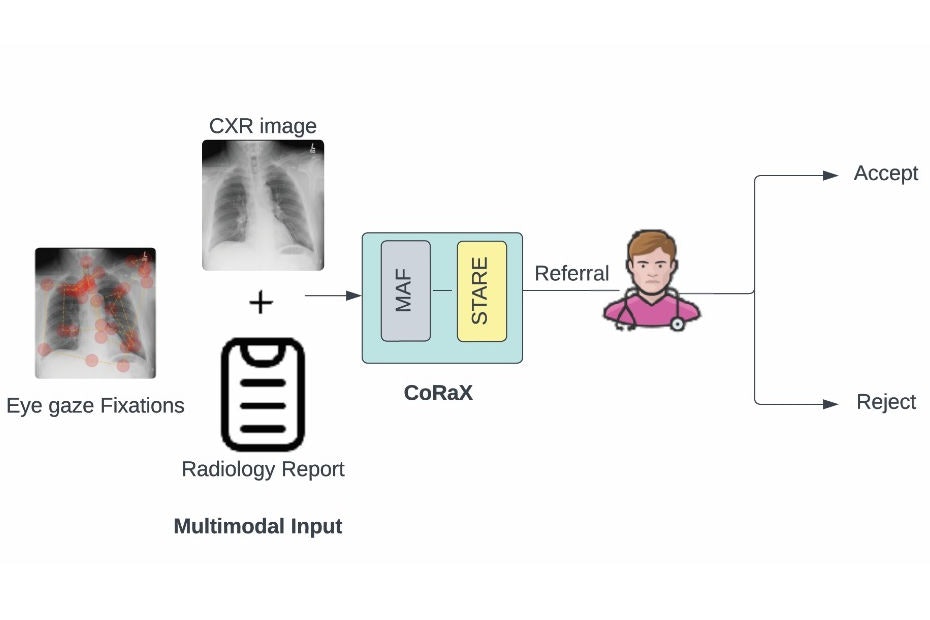GSK plc (LSE/NYSE: GSK) notes that the US Food and Drug Administration (FDA) Oncologic Drugs Advisory Committee (ODAC) voted against the overall benefit/risk profile at the proposed dosage of Blenrep (belantamab mafodotin-blmf) combinations. The belantamab mafodotin combinations were evaluated in adults with relapsed or refractory multiple myeloma who have received at least one prior line of therapy.
The FDA will consider the recommendation of the committee as it finalises its review on Blenrep in advance of the 23 July 2025 PDUFA date.
GSK remains confident in the benefit/risk profile of Blenrep (belantamab mafodotin-blmf) and will continue to work closely with the FDA as they complete their review for Blenrep in patients with relapsed or refractory multiple myeloma where there is high unmet need for novel treatment options that extend survival.
Blenrep combinations are approved in relapsed or refractory multiple myeloma in the UK1 and Japan2, as well as other markets, including Switzerland (based on the results of DREAMM-8). Applications are currently under review in all major markets globally, including the European Union3, and China4 (based on the results of DREAMM-7, with Breakthrough Therapy Designation for the combination and priority review for the application).
About multiple myeloma
Multiple myeloma is the third most common blood cancer globally and is generally considered treatable but not curable.5,6 There are approximately more than 180,000 new cases of multiple myeloma diagnosed globally each year.7 Multiple myeloma is a significant and enduring health concern in the US, where more than 35,000 cases were diagnosed in 2024.8 Research into new therapies is needed as multiple myeloma commonly becomes refractory to available treatments.9 Many patients with multiple myeloma are treated in a community cancer setting, leaving an urgent need for new, effective therapies with manageable side effects that can be administered outside of an academic centre.10,11
About Blenrep
Blenrep is an ADC comprising a humanised BCMA monoclonal antibody conjugated to the cytotoxic agent auristatin F via a non-cleavable linker. The drug linker technology is licensed from Seagen Inc.; the monoclonal antibody is produced using POTELLIGENT Technology licensed from BioWa Inc., a member of the Kyowa Kirin Group.
Indication
Blenrep combinations were approved in relapsed or refractory multiple myeloma in the UK in April 2025 and in Japan in May 2025. Applications are currently under review in all major markets.
In the UK, Blenrep is indicated in adults for the treatment of multiple myeloma:
- in combination with bortezomib and dexamethasone in patients who have received at least one prior therapy; and
- in combination with pomalidomide and dexamethasone in patients who have received at least one prior therapy including lenalidomide.
IMPORTANT SAFETY INFORMATION FOR BLENREP
More information can be found in the Blenrep Summary of Product Characteristics and Patient Information leaflets available on the MHRA Products website.12
About DREAMM-7
DREAMM-7 is a multicentre, open-label, randomised phase III clinical trial evaluating the efficacy and safety of belantamab mafodotin combined with bortezomib plus dexamethasone (BVd) compared to daratumumab combined with bortezomib plus dexamethasone (DVd) in patients with relapsed or refractory multiple myeloma who previously were treated with at least one prior line of multiple myeloma therapy, with documented disease progression during or after their most recent therapy. The trial enrolled 494 participants who were randomised 1:1 to receive either BVd or DVd. Belantamab mafodotin was administered at a dose of 2.5mg/kg intravenously every three weeks in combination for the first eight cycles and then continued as a single agent. The primary endpoint was progression-free survival (PFS) as per an independent review committee, with secondary endpoints including overall survival (OS), duration of response (DOR), and minimal residual disease (MRD) negativity rate as assessed by next-generation sequencing. Other secondary endpoints include overall response rate (ORR), safety, and patient reported and quality of life outcomes.
In DREAMM-7, BVd nearly tripled median PFS versus DVd (36.6 months versus 13.4 months, respectively (hazard ratio [HR]: 0.41 [95% confidence interval (CI): 0.31-0.53], p-value<0.00001). DREAMM-7 also met the key secondary endpoint of OS, showing a statistically significant and clinically meaningful 42% reduction in the risk of death at a median follow-up of 39.4 months favouring BVd (n=243) versus DVd (n=251) (HR 0.58; 95% CI: 0.43-0.79; p=0.00023). The three-year OS rate was 74% in the BVd arm and 60% in the DVd arm.
PFS results were presented at the American Society of Clinical Oncology (ASCO) Plenary Series in February 2024 and published in the New England Journal of Medicine. OS results were presented at the American Society of Hematology (ASH) Annual Meeting in December 2024.13,14
About DREAMM-8
DREAMM-8 is a multicentre, open-label, randomised phase III clinical trial evaluating the efficacy and safety of belantamab mafodotin in combination with pomalidomide plus dexamethasone (BPd) compared to bortezomib and pomalidomide plus dexamethasone (PVd) in patients with relapsed or refractory multiple myeloma previously treated with at least one prior line of multiple myeloma therapy, including a lenalidomide-containing regimen, and who have documented disease progression during or after their most recent therapy. The trial included 302 participants who were randomised 1:1 to receive either BPd or PVd. Compared to the patient population studied in the DREAMM-7 trial, patients in DREAMM-8 were more heavily pre-treated in that all had prior exposure to lenalidomide, 78% were refractory to lenalidomide, 25% had prior daratumumab exposure and of those most were daratumumab refractory. Belantamab mafodotin was administered at a dose of 2.5mg/kg intravenously for the first cycle and then 1.9mg/kg intravenously every four weeks. The primary endpoint was PFS as per an independent review committee, with key secondary endpoints including OS and MRD negativity rate as assessed by next-generation sequencing. Other secondary endpoints include ORR, DOR, safety, and patient reported and quality of life outcomes.
At the primary analysis at a median follow-up of 21.8 months, the median PFS was not yet reached (95% CI: 20.6-not yet reached [NR]) with the Blenrep combination compared to 12.7 months in the bortezomib combination (95% CI: 9.1-18.5). A positive OS trend was observed but not statistically significant (HR: 0.77 [95% CI: 0.53-1.14]) at the interim analysis. OS follow-up continues and further analyses are planned.
With additional follow-up, a clinically meaningful benefit continued to be observed, with a near-tripling of the median PFS for the Blenrep combination versus the bortezomib combination (32.6 months versus 12.5 months, respectively (HR: 0.49 [95% CI: 0.35-0.68]). At the end of one year, 71% (95% CI: 63-78) of patients in the BPd combination group compared to 51% (95% CI: 42-60) in the PVd combination group were alive and had not progressed. A benefit for BPd was observed across all pre-specified subgroups including those with poor prognostic features, such as patients who were refractory to lenalidomide and patients with high-risk cytogenetics.
Results were first presented at the 2024 ASCO Annual Meeting and published in the New England Journal of Medicine.15 Updated PFS results were presented at European Hematology Association Congress (EHA) 2025.16
GSK in oncology
Our ambition in oncology is to help increase overall quality of life, maximise survival and change the course of disease, expanding from our current focus on blood and women’s cancers into lung and gastrointestinal cancers, as well as other solid tumours. This includes accelerating priority programmes such as antibody-drug conjugates targeting B7-H3 and B7-H4, and IDRX-42, a highly selective KIT tyrosine kinase inhibitor.
About GSK
GSK is a global biopharma company with a purpose to unite science, technology, and talent to get ahead of disease together. Find out more at gsk.com.
References
- GSK press release issued 17 April 2025. Blenrep (belantamab mafodotin) combinations approved by UK MHRA in relapsed/refractory multiple myeloma. Available at https://www.gsk.com/en-gb/media/press-releases/blenrep-belantamab-mafodotin-combinations-approved-by-uk-mhra-in-relapsedrefractory-multiple-myeloma/.
- GSK press release issued 19 May 2025. Blenrep (belantamab mafodotin) combinations approved in Japan for treatment of relapsed/refractory multiple myeloma. Available at https://www.gsk.com/en-gb/media/press-releases/blenrep-belantamab-mafodotin-combinations-approved-in-japan/.
- GSK press release issued 19 July 2024. Blenrep (belantamab mafodotin) combinations in multiple myeloma application accepted for review by the European Medicines Agency. https://www.gsk.com/en-gb/media/press-releases/blenrep-belantamab-mafodotin-combinations-in-multiple-myeloma-application-accepted-for-review-by-the-european-medicines-agency.
- GSK press release issued 9 December 2024. Blenrep (belantamab mafodotin) combination accepted for priority review in China in relapsed/refractory multiple myeloma. Available at: https://www.gsk.com/en-gb/media/press-releases/blenrep-belantamab-mafodotin-combination-accepted-for-priority-review-in-china-in-relapsedrefractory-multiple-myeloma/.
- Sung H, Ferlay J, Siegel R, et al. Global Cancer Statistics 2020: GLOBOCAN Estimates of Incidence and Mortality Worldwide for 36 Cancers in 185 Countries. CA Cancer J Clin. 2021;71(3):209-249. doi:10.3322/caac.21660.
- Kazandjian D. Multiple myeloma epidemiology and survival: A unique malignancy. Semin Oncol. 2016;43(6):676–681.doi: 10.1053/j.seminoncol.2016.11.004.
- Global Cancer Observatory. International Agency for Research on Cancer. World Health Organization. Multiple Myeloma fact sheet. Available at: https://gco.iarc.who.int/media/globocan/factsheets/cancers/35-multiple-myeloma-fact-sheet.pdf. Accessed 5 March 2025.
- American Cancer Society Cancer Statistics Center. Myeloma. https://cancerstatisticscenter.cancer.org/#!/cancer-site/Myeloma.
- Nooka AK, Kastritis E, Dimopoulos MA. Treatment options for relapsed and refractory multiple myeloma. Blood. 2015;125(20). doi:10.1182/blood-2014-11-568923.
- Gajra A, Zalenski A, Sannareddy A, et al. Barriers to Chimeric Antigen Receptor T-Cell (CAR-T) Therapies in Clinical Practice. Pharmaceut Med. 2022 Jun;36(3):163-171.
- Crombie J, Graff T, Falchi L, et al. Consensus recommendations on the management of toxicity associated with CD3×CD20 bispecific antibody therapy. Blood (2024) 143 (16): 1565–1575.
- Medicines & Healthcare products Regulatory Agency website: https://products.mhra.gov.uk/.
- Hungria V, Robak P, Hus M et al. Belantamab Mafodotin, Bortezomib, and Dexamethasone for Multiple Myeloma. N Engl J Med. 2024 Aug 1;391(5):393-407. doi: 10.1056/NEJMoa2405090. Epub 2024 Jun 1. PMID: 38828933.
- Hungria V, Robak P, H Marek et al. Belantamab Mafodotin, Bortezomib, and Dexamethasone Vs Daratumumab, Bortezomib, and Dexamethasone in Relapsed/Refractory Multiple Myeloma: Overall Survival Analysis and Updated Efficacy Outcomes of the Phase 3 Dreamm-7 Trial. Presented at the 66th American Society of Hematology (ASH) Annual Meeting and Exposition. December 2024.
- Dimopoulos MA, Beksac M, Pour L, Delimpasi S et al. Belantamab Mafodotin, Pomalidomide, and Dexamethasone in Multiple Myeloma. N Engl J Med. 2024 Aug 1;391(5):408-421. doi: 10.1056/NEJMoa2403407. Epub 2024 Jun 2. PMID: 38828951.
- Dimopoulos MA, Beksac M, Pour L et al. Updated results from phase 3 DREAMM-8 study of Belantamab Mafodotin, Pomalidomide and Dexamethasone versus Pomalidomide plus Bortezomib and Dexamethasone in relapsed/refractory multiple myeloma. HemaSphere | 2025;9(S1) 846 EHA 2025 Congress.







